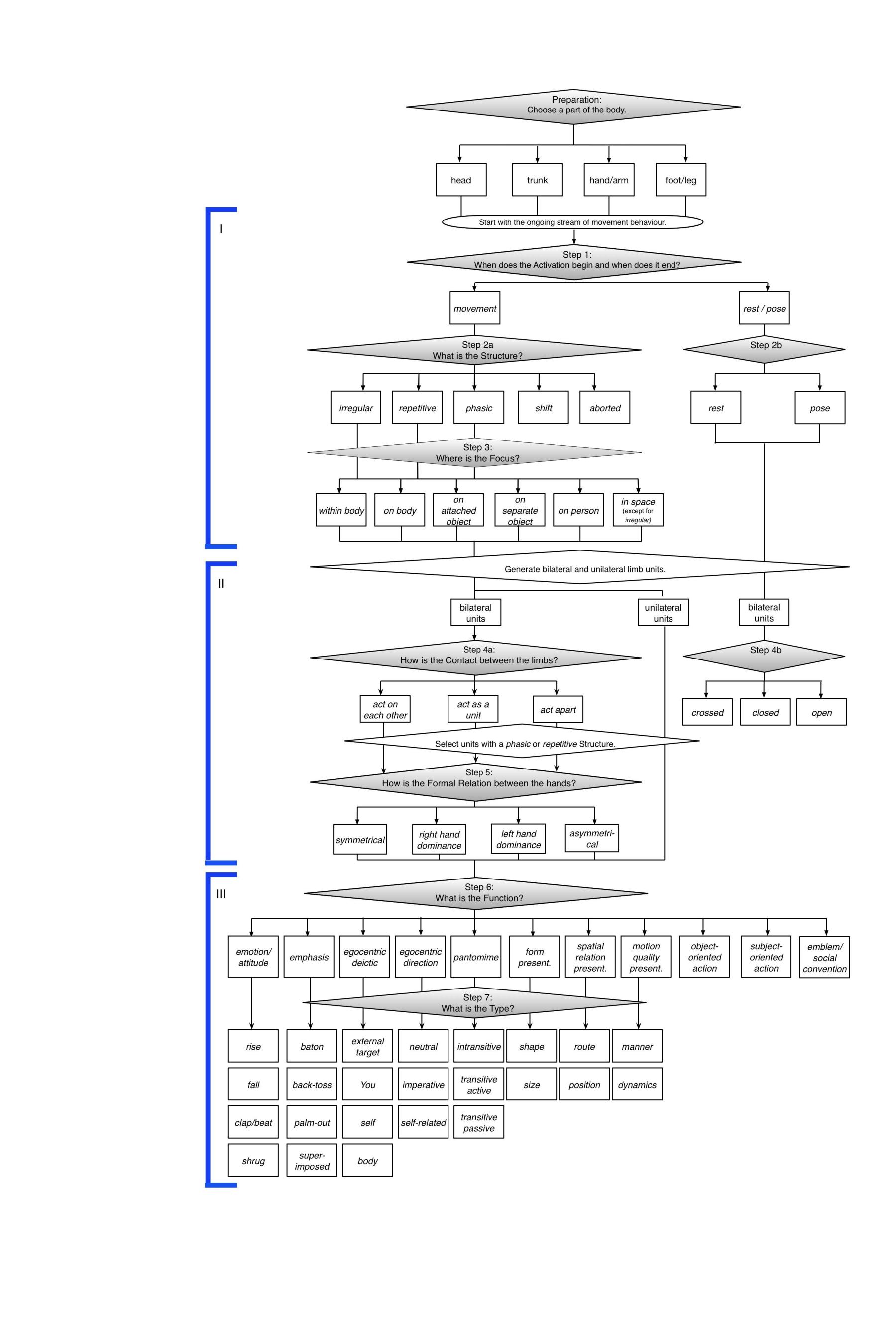THE NEUROGES® ANALYSIS SYSTEM
In NEUROGES®, as shown in the figure below, the analysis of hand movements and gestures is guided by an assessment algorithm. In seven subsequent assessment steps, the ongoing stream of hand movement behavior is segmented and classified into more and more fine-grained behavioural units. At each step, several objective movement criteria that serve to further classify the movement are added to the assessment. Thus, the final gesture analysis (step 7) is based on a precise pre-description of the visual appearance of the hand movement.
The output of the NEUROGES® analysis is not limited to step 7, as each assessment step represents a conceptual category on its own. That is, in each category (step), a specific set of movement criteria that are associated with a particular mental or cognitive function serves to classify the movement with a value. In each category, its values represent a continuum between two polar qualities of the function, as indicated by their order in the figure below. As an example, the Focus category (step 3) registers aspects of hand movement behaviour related to attentional processes, ranging from to internal to external orientation.
The seven categories are conceptually grouped in three modules. Each module has a main focus. As an example, Module II, which comprises steps 4 and 5, focuses on laterality and inter-hemispheric coordination. The modular design enables a flexible use of the NEUROGES® system according the researcher's needs, including the option to combine it with other nonverbal behaviour and gesture coding systems.
The validity of the values, i.e., the mental process or the meaning that is attributed to the hand movement or gesture, is only guaranteed, if the values are coded reliably. Researchers and diagnosticians are therefore recommended to thoroughly study the coding manual and/or to participate in the NEUROGES® training.
